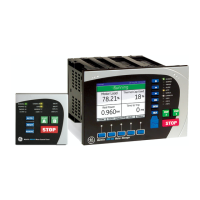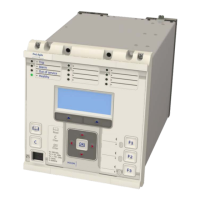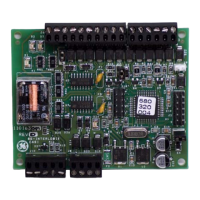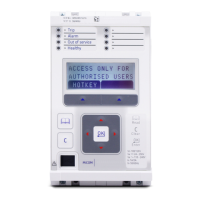If the current configuration is Two-Ended and the new setting is Three-Ended, the device checks that all the
communications are healthy and sends out the restore command to the other devices. It then checks that the
scheme has stabilised as ‘Three-Ended’ after one second.
If any of the communications in the scheme were failed or if the scheme has not stabilised as Three-Ended, the
device returns to its original Two-Ended setting and issues a configuration error alarm.
If the scheme stabilises as Three-Ended, the Reconfiguration setting is updated.
If the device configuration is Three-Ended and the new setting is Two-Ended L & R1, the device first checks that the
two interlocks are energised. The differential tripping is blocked, but the backup protection can still operate the trip
outputs. The device then checks that the communication with Remote 1 is healthy and sends out the command to
the remote devices. It then checks that the scheme has stabilised as Two-Ended L & R1 after one second.
If the interlocks are not energised, or the communication with Remote 1 has failed, or the scheme does not
stabilise as Two-Ended L & R1, the device returns to Three-Ended and issues a configuration error alarm.
If the scheme stabilises as Two-Ended L & R1, the Reconfiguration setting is updated.
If the device configuration is Three-Ended and the new setting is Two-Ended L & R2, the device reacts similarly to a
Two-Ended L & R1 reconfiguration.
If the device configuration is Three-Ended and the new setting is Two-Ended R1&R2, the device reacts similarly to a
Two-Ended L & R1 reconfiguration.
6.1
THREE-TERMINAL SCHEME RECONFIGURATION ON ENERGISATION
This occurs when a device is energised and it tries to configure itself to be compatible with other devices in the
scheme. The scheme tries to maintain the configuration set by the user. However, there are certain conditions that
may prevent this from happening:
When powered on the device configuration depends on the following factors:
● The scheme currently configured on the remote devices
● The status of the communication links
● The configuration stored in non-volatile memory before power down
When the device is energised, the following events occur:
● The device checks whether any messages are being received. If so, then the configuration commands in the
first messages to arrive are used to configure the device. This is subject to certain conditions. If the device
receives a Two-Ended configuration instruction from one end and a Three-Ended configuration instruction
from the other end, it uses the Two-Ended instruction. If both incoming commands are Three-Ended, the
scheme stabilses as three-ended.
● If no messages arrive from either end, after one second the device assumes the configuration it had before
power down. Once messages begin to arrive again, the device checks them for validity against the current
scheme. If one device is Three-Ended and the other is Two-Ended, the configuration changes to Two-Ended.
If both are Three-Ended or both are the same Two-Ended scheme, that scheme becomes the configuration.
If two devices have different Two-Ended configurations, they are unable to determine which one to use and
each generates a configuration error alarm and each device remains in its current configuration. This
condition can be cleared by restoring the devices or by removing the supply to the device with the incorrect
configuration.
● If all the devices in a scheme are energised simultaneously, the configuration reverts to Three-Ended if all
the communication channels are healthy. This occurs because all the devices are waiting to be told their
configuration and all default to Three-Ended. This is a very unlikely event in normal use.
If a communication channel has only half failed (for example, the receive channel has failed but not the transmit
channel), there may be configuration errors on power up because the devices are not communicating correctly. If
the status is available from the third device and communications are healthy using its two channels, the scheme
stabilises correctly.
Chapter 6 - Current Differential Protection P543i/P545i
110 P54x1i-TM-EN-1
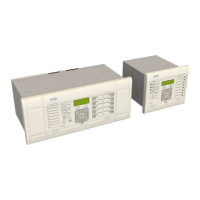
